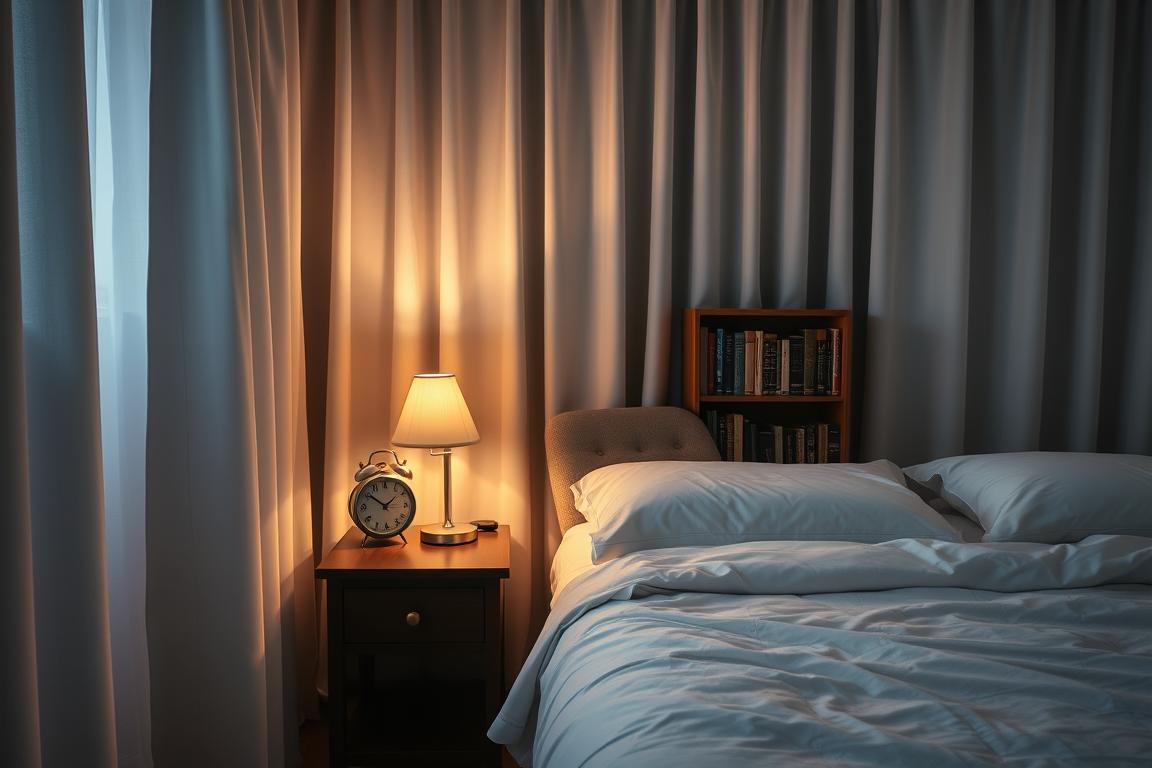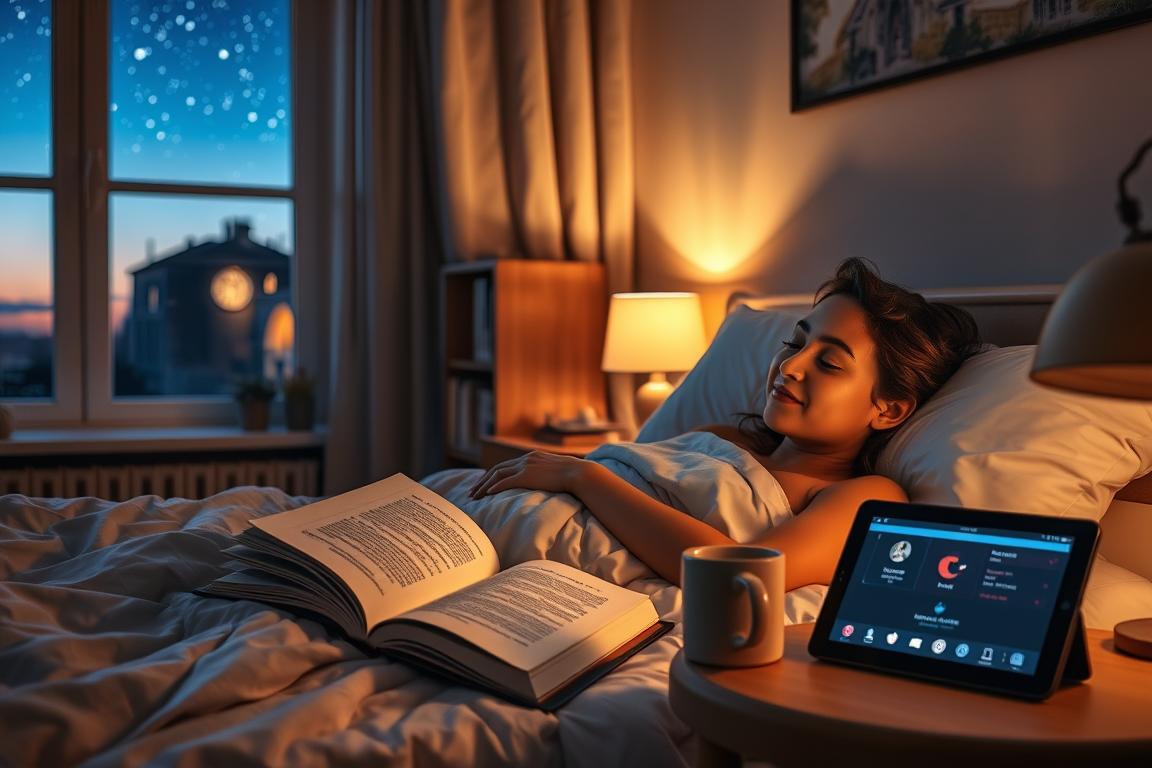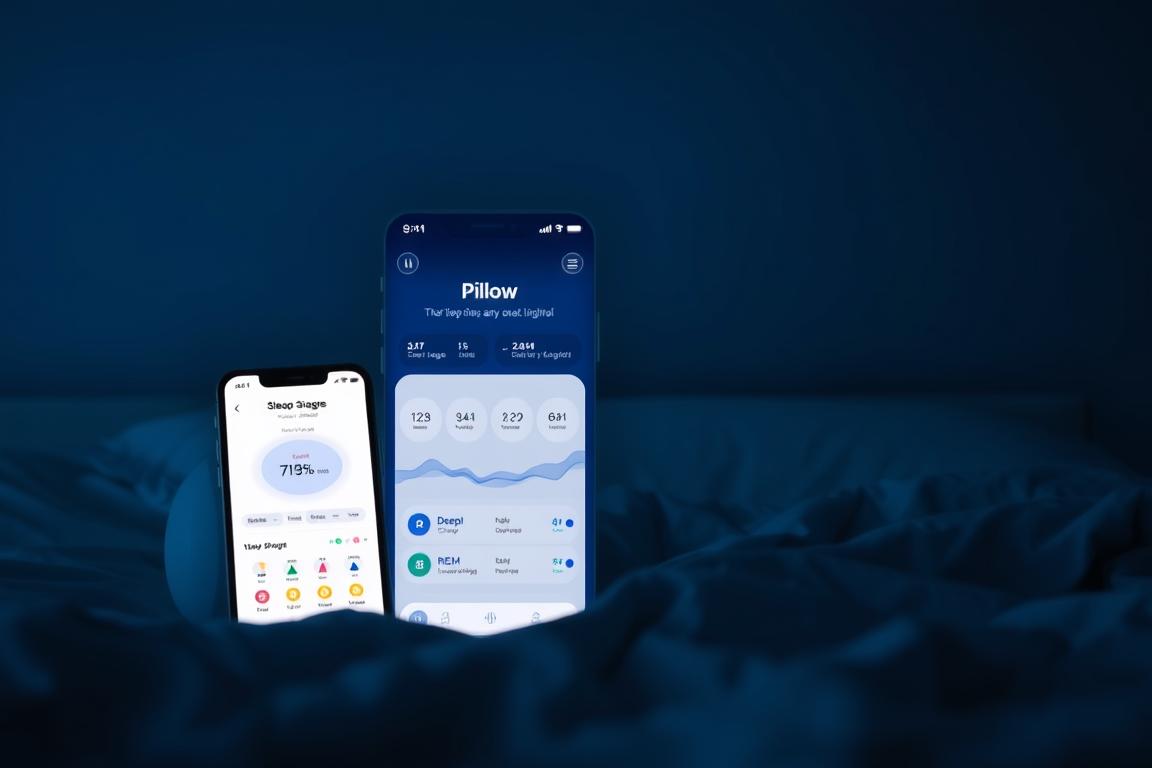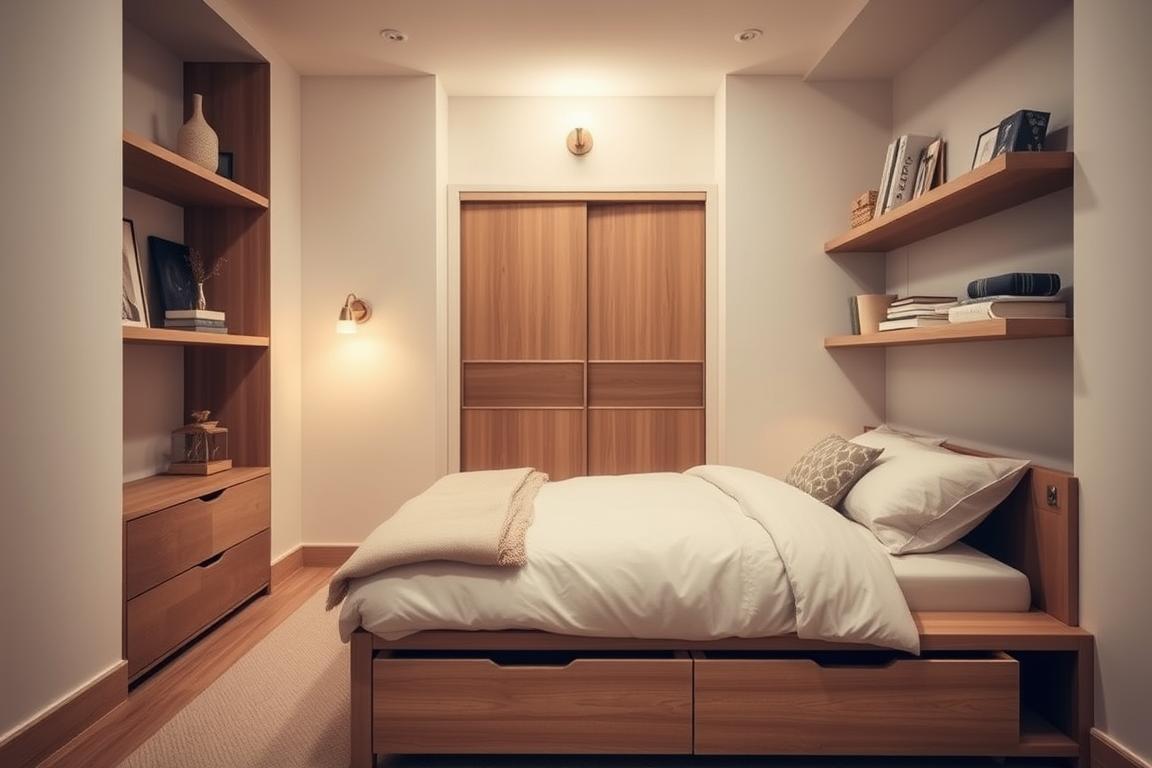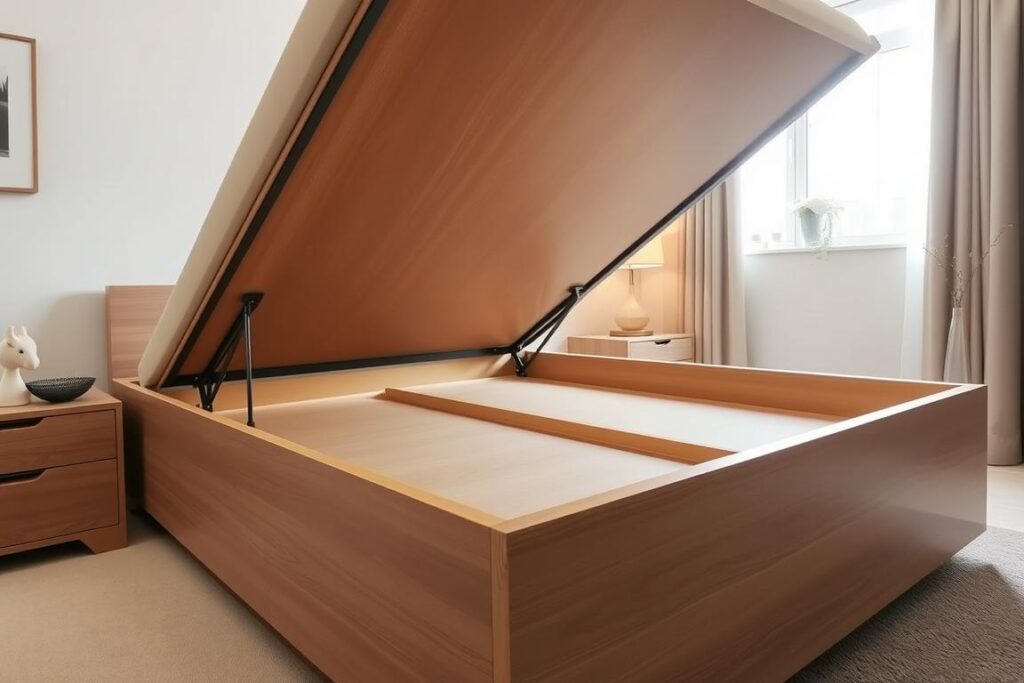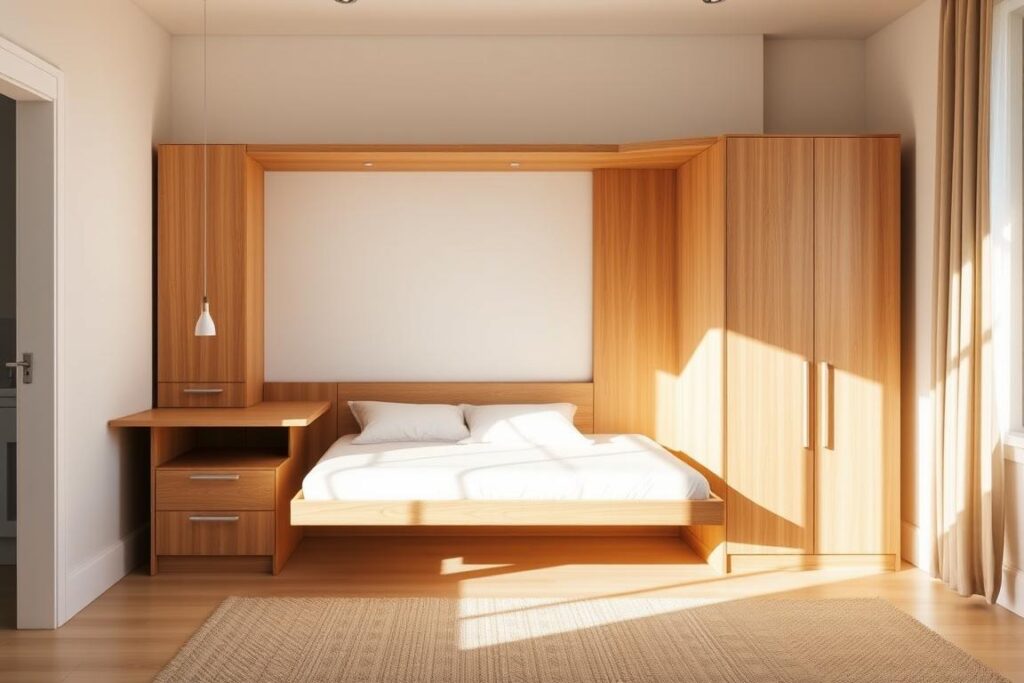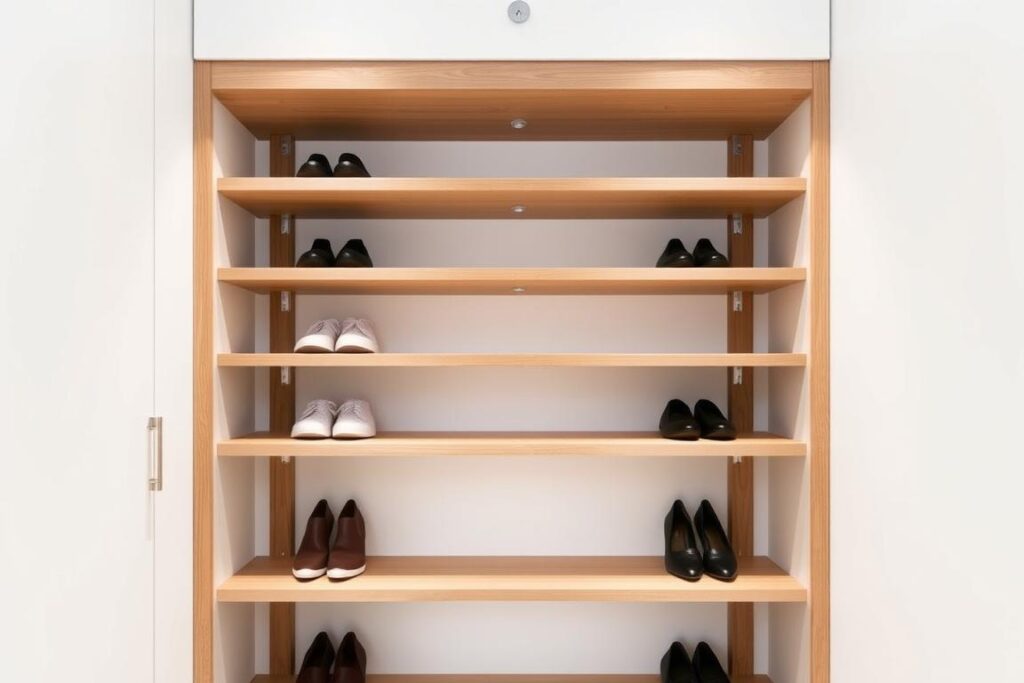Fix Sleep Schedule: 7 Gentle Steps for Better Sleep
Updated 2025
You can fix sleep schedule without harsh tactics. Start by picking a realistic bedtime and wake time you can keep most days. Small shifts of 15–30 minutes make change manageable and help your body adjust without burnout.
Adults need at least seven hours most nights for better health and daytime energy. According to the CDC, consistency helps you fall asleep faster and feel more alert the next day.
This guide gives a clear path you can follow while fitting work, family, and social life. You’ll focus on habits that improve sleep quality, avoid extreme moves, and build a simple wind-down that signals bedtime to your clock—and steadily fix sleep schedule in a sustainable way. For broader background, explore our sleep hygiene guide.

Key Takeaways
- Choose a realistic wake time and bedtime—and stick to them daily.
- Shift timing gradually in 15–30 minute steps for sustainable progress.
- Use consistent cues and a nightly routine to train your body to sleep.
- Aim for at least seven hours to protect health and daytime energy.
- Small, steady changes add up and help you fix sleep schedule for good.
Why Your Sleep Schedule Matters for Your Day-to-Day Energy
Regular timing smooths out mood, focus, and stamina. When your hours stay steady, your body and mind run more efficiently. A consistent schedule supports memory, reaction time, and mood—and reduces daytime drowsiness.
- Consistent hours sharpen focus and boost energy.
- Good sleep protects heart, immunity, and long-term cognitive health.
- Even one hour of drift can lower sleep quality and raise next-day fatigue.
| What | Short-term effect | Long-term effect | Why it matters |
|---|---|---|---|
| Irregular timing | Sleepiness, slower reactions | Higher accident and error rates | Disrupts attention and safety |
| Chronic short sleep | Poor mood, low energy | Cardiometabolic and immune issues | Affects health and longevity |
| Regular sleep hours | Sharper thinking, steadier mood | Better metabolism and resilience | Aligns body clock for quality rest |
Understand Your Circadian Rhythm and Internal Clock
Light and darkness talk to your biological clock, steering daytime energy and nightly rest. Morning light tells your brain to be alert; evening darkness lets melatonin rise so sleep comes easier. Aligning with this day-night pattern helps you fix sleep schedule naturally.
Light, melatonin, and the sleep-wake cycle
Bright morning light suppresses melatonin and signals wakefulness. Evening light—especially from screens—can delay melatonin and push your cycle later.
Day-night alignment and your brain’s signals
Your internal clock coordinates when you feel alert or tired. Matching your routine to daylight locks this rhythm in place and supports overall well-being.
- Use morning light (outdoor light if possible) to anchor your rhythm.
- Dim lights in the last hour before bed to cue melatonin release.
- Small changes in light timing can nudge earlier bedtimes or smoother mornings.
The Core Plan to Fix Sleep Schedule
Start with one clear anchor: a consistent wake-up time you keep every day. That single habit helps your internal clock lock into a reliable rhythm so you can steadily fix sleep schedule.
Set a consistent wake-up time (even on weekends)
Pick a realistic time you can maintain seven days a week. This stabilizes your rhythm and makes earlier bedtimes easier to reach.
Shift your timing gradually in 15–30 minute steps
If you need to move bedtime earlier (or later), change it in 15–30 minute increments every few days. Small shifts prevent grogginess and keep progress steady.
Build a wind-down routine that cues sleep
Create a short pre-bed routine with dim lights, calm reading, light stretching, or breathing. For a simple checklist, see our sleep hygiene checklist.
Align with bright mornings and dim evenings
Get bright light soon after waking and keep evenings low-light. Pair this with steady habits to help your brain predict bedtime and naturally fix sleep schedule.
- Hold your wake-up time after late nights to keep momentum.
- Track tweaks for a week to discover what helps most.
Sleep Hygiene & Environment Essentials
Evening habits and a calm bedroom make it easier for your body to drift into rest. Simple, repeatable steps improve sleep quality without drastic measures.
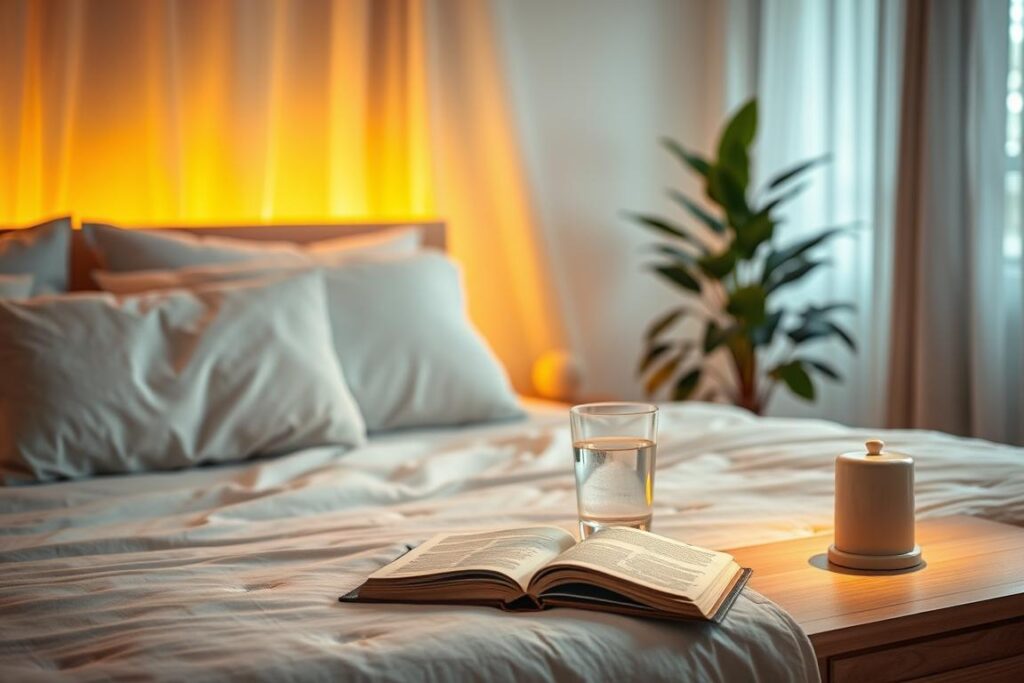
Reduce evening screens and blue light
Set a one-hour screen cutoff. Dim lamps, silence notifications, and avoid heavy mental work or late caffeine.
Create a relaxing pre-bed ritual
Try 10–20 minutes of yoga, gentle stretches, journaling, or a caffeine-free tea. Consistency turns this into a strong cue for sleep.
Dark, quiet, and cool
Use blackout curtains or a sleep mask to block light and keep the room slightly cool. For noise, consider a fan or machine—see our picks for best white noise machines—or simple foam earplugs.
Bedding, pillows, and comfort cues
Choose a mattress and pillows that keep your spine aligned. Keep bright LEDs out of sight and reserve the bed for sleep and intimacy. For light control tips, explore how to make your bedroom dark. For more background on bedding safety, see this overview of bedding certifications from Sleep Foundation.
Daily Choices: Caffeine, Alcohol, Exercise, and Meals
Timing your food, drink, and movement helps your body wind down on schedule. Small changes can produce better nights and steadier daytime energy.

Caffeine cutoffs and alcohol pitfalls
Pick a personal caffeine cutoff (many do well between late morning and early afternoon). Skip nightcaps—alcohol can fragment sleep later.
Exercise timing that supports your cycle
Move most days. Finish vigorous workouts 1–2 hours before bed; light evening stretching or a short walk can relax you without spiking alertness.
Evening eating patterns and light snacks
Eat your last full meal 2–3 hours before bed. If hungry later, choose a small, balanced snack. Keep hydration steady by day and taper at night.
- Quick wins: earlier caffeine cutoff, no late alcohol, earlier workouts, and dinner on the early side to help fix sleep schedule.
Tools & Troubleshooting
Targeted tools can help you realign faster while you build strong routines. Use them briefly and intentionally to avoid rebound effects.
Melatonin: when it helps and how to use it safely
Low doses can nudge your circadian rhythm after travel or shifts. Start small and talk with your clinician if you take medications or notice side effects.
Light therapy vs. natural morning light
A timed light box delivers high-intensity morning light; outdoor light plus a short walk also works well. Use light at the same time daily for best results.
CBT-I for chronic insomnia
Cognitive Behavioral Therapy for Insomnia teaches thought and behavior changes that deliver lasting improvements. It’s a strong option if you’re still struggling to fix sleep schedule. Read an overview from the AASM here: CBT-I facts.
Shift work, jet lag, and social jet lag
Anchor one realistic wake time on work and off days when possible. Use planned light and darkness around shifts or flights; brief, early naps can improve safety without wrecking night sleep.
Stress, racing thoughts, and mental health
Stress can hijack bedtime. Try deep breathing, a 10-minute journal, or CBT-I techniques to quiet looping thoughts. Watch a quick explainer: What is your circadian rhythm?
| Tool | Best time | Main benefit | Consideration |
|---|---|---|---|
| Melatonin | Evening, short-term | Shifts circadian rhythm | Possible side effects; consult clinician |
| Light therapy box | Morning, consistent | Faster phase adjustment | Requires timing and brightness |
| Natural morning light | Daily after waking | Supports long-term alignment | Weather and routines vary |
| CBT-I | For chronic issues | Lasting behavior change | Needs sessions or guided program |
Helpful resources: Reset your sleep routine (Sleep Foundation).
How long it takes—and when to get help
Many people feel clearer mornings and easier bedtimes within 1–2 weeks of steady habits. If symptoms last three months or you suspect a sleep disorder (e.g., loud snoring, gasping, severe daytime sleepiness), talk with a clinician or sleep specialist.
FAQ
What is the fastest way to fix sleep schedule?
Set a consistent wake-up time, get bright morning light, and move bedtime earlier in 15–30 minute steps. Pair this with a simple wind-down.
Should I sleep in after a late night?
Try not to. Hold your wake time and use a short early nap (under 30 minutes) if needed. This protects your nighttime sleep drive.
Does melatonin fix sleep schedule on its own?
It can help with timing, but routines and light are the real anchors. Use low doses briefly and follow your provider’s guidance.
What temperature is best for sleep?
Many people sleep best slightly cool. Keep the bedroom dark, quiet, and comfortably cool to support quality rest.
How much sleep do adults need?
Most adults do best with at least seven hours per night. Protecting that window makes it easier to fix sleep schedule and feel steady energy.
Conclusion
Anchor one simple habit, build a gentle routine, and you can fix sleep schedule without drastic moves. Hold a steady wake-up time, nudge bedtime in small steps, use morning light and dim evenings, and keep your room calm and comfortable. With patience, better sleep brings clearer thinking, more energy, and lasting health benefits. For more cozy, practical bedroom tips, visit Cozy Bed Quarters.
Related reading from Cozy Bed Quarters
- Sleep Hygiene Checklist: Simple Steps for Tonight
- Best White Noise Machines for Deeper Sleep
- How to Make Your Bedroom Dark (on Any Budget)

